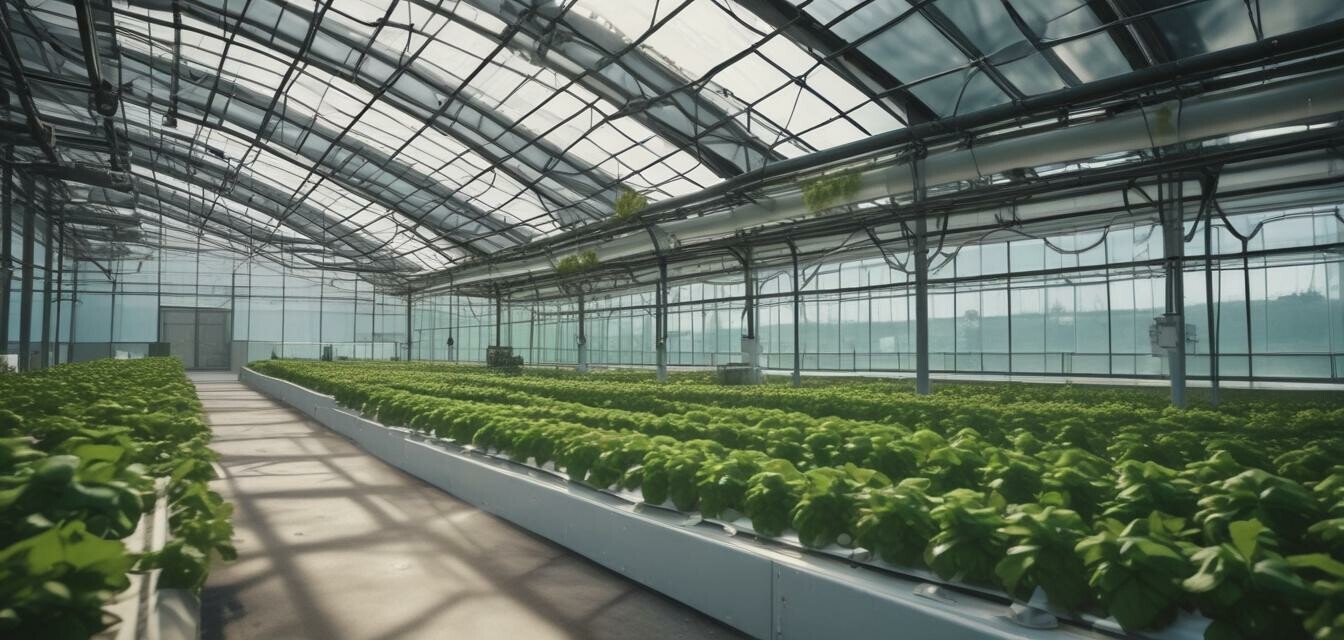
Building a Hydroponic Greenhouse
Key Takeaways
- A hydroponic greenhouse allows for year-round plant growth by providing a controlled environment.
- Choosing the right location, materials, and plants is essential for success.
- Implementing efficient systems for water, nutrients, and lighting optimizes plant health and yield.
- Follow the step-by-step instructions to build your own hydroponic greenhouse and enjoy fresh produce all year long.
Building a hydroponic greenhouse can significantly enhance your gardening experience by creating a controlled environment for your plants. This guide will provide you with step-by-step instructions to set up a hydroponic greenhouse, making it easier to extend your growing season and improve plant health. Whether you’re a seasoned gardener or a beginner, this project offers an excellent opportunity to cultivate a range of plants efficiently.
Benefits of a Hydroponic Greenhouse
Before diving into the construction process, let's explore the benefits of having a hydroponic greenhouse:
- Year-round growth: With better climate control, you can grow plants all year, regardless of external weather conditions.
- Space efficiency: Hydroponic systems are usually more compact, allowing more plants in a smaller area.
- Water savings: Hydroponics uses significantly less water compared to traditional gardening methods.
- Less chance of pests and diseases: The controlled environment reduces exposure to pests and soil-borne diseases.
Materials Needed for Construction
To build your hydroponic greenhouse, you'll need to gather the following materials:
| Item | Description |
|---|---|
| Greenhouse Frame | Durable materials like aluminum or treated wood to create the structure. |
| Glazing Material | Transparent panels that allow sunlight in (e.g., polycarbonate or glass). |
| Hydroponic System | Choose a method (e.g., NFT, DWC, Ebb and flow) that suits your needs. |
| Water Pump | An efficient pump for circulating nutrients through your system. |
| Growth Medium | Media for your plants such as rockwool, clay pellets or coco coir. |
| Nutrient Solution | Add a hydroponic nutrient solution to feed your plants. |
| Grow Lights | Supplemental lighting to ensure your plants receive adequate light, especially in winter. |
| Fans | Air circulation fans for temperature control and to strengthen plant stems. |
Step-by-Step Instructions
Follow these steps to construct your hydroponic greenhouse:
- Select a suitable location: Choose a flat, sunny area with good drainage.
- Design the layout: Plan the dimensions and design of your greenhouse, keeping enough space for your hydroponic system.
- Build the frame: Assemble the frame using your chosen materials. Ensure it is sturdy enough to support the weight of the glazing.
- Install the glazing: Attach the clear panels to the frame, securing them properly for insulation.
- Set up the hydroponic system: Choose a hydroponic method and install it according to the specifications.
- Install the water system: Set up pumps and water lines for efficient nutrient delivery.
- Choose your plants: Select a variety of plants that thrive in hydroponic systems, such as lettuce, herbs, and tomatoes.
- Use grow lights: Install grow lights if natural sunlight is insufficient, especially during winter months.
- Monitor and maintain: Regularly check water levels, nutrient concentration, and plant health to ensure proper growth.
Maintaining Your Hydroponic Greenhouse
Once your greenhouse is set up, it's essential to maintain it for continued success:
- Regular cleaning: Keep your greenhouse clean to reduce pest and disease risks.
- Monitor climate conditions: Use sensors to track temperature, humidity, and light levels.
- Check nutrient solution: Regularly test and adjust the nutrient solution for optimal plant growth.
- Inspect plants frequently: Look for signs of pests or diseases and address them promptly.
Pros
- Enhanced control over the growing environment
- Year-round planting possibilities
- Efficient use of space and resources
- Higher yields compared to traditional gardening
Cons
- Initial setup costs can be high
- Requires ongoing maintenance and monitoring
- Potential for technical issues with equipment
Conclusion
Building a hydroponic greenhouse can be a rewarding and productive project. With the right materials and guidance, a thriving greenhouse can provide fresh produce for your kitchen all year long. Not only does it allow for better plant health, but it also offers an opportunity to engage in sustainable gardening practices.
For more information on how to enhance your hydroponic gardening experience, explore our other blogs on buying guides,news and trends, and various DIY projects.

